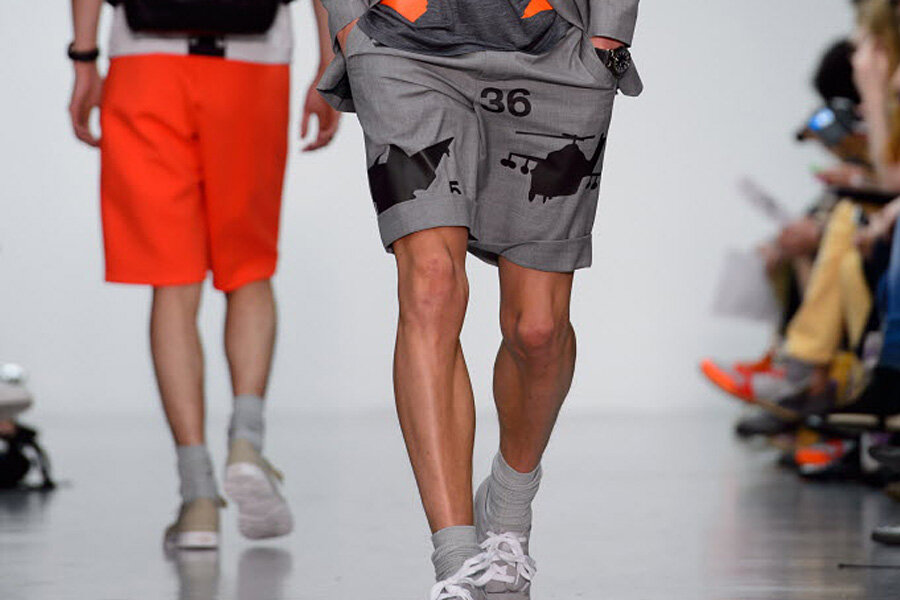#FreeTheKnee: Are men revolting against pants at work?
Loading...
Should men wear shorts at work?
That’s the question one Washington Post writer is asking. Christopher Ingraham describes the experience of wearing shorts to the office for the first time in an opinion article that uses exaggerated images to drive his message home – it’s time for men to forgo slacks in the summer.
“The average guy in your office probably wears the exact same clothes in August and December – a dress shirt over an undershirt, tucked in to full-length slacks. Add a tie or sport-coat as needed. Lather, rinse and repeat,” Mr. Ingraham says.
After stories about thermostats that cater to men’s dress codes began circulating the Internet, he decided to take things into his own hands. He says that wearing shorts provided his legs with ventilation they rarely received in the humid summer months and cut back on sweat.
There’s even a #FreeTheKnee hashtag on Twitter.
But some aren't as thrilled. Rex Huppke, an advice columnist for the Chicago Tribune, tackled the shorts dilemma in 2013. He reached out to workplace fashion expert Mary Lou Andre, editor of DresingWell.com, and asked why shorts are never seen as an office option.
“They’re just not the norm in our society in most industries – they’re a distraction,” she said. “They are one of the lower-food-chain bottom options. With shorts or, for women, an inappropriate skirt, you’re emphasizing the bottom half (of your body). You don’t want to emphasize the bottom half of your body,” she said.
In other words, wearing shorts attracts people to your out-of-norm style choice and can be distracting. Mr. Huppke describes his experience wearing shorts to work and says that he felt awkward, almost like he was wearing underwear. Ellen Kossek, a professor at Purdue University who specializes in work-life issues, told him this discomfort could come from a blurring of boundaries, specifically the line between work and relaxation.
“People have physical cues that they use to feel like they’re at work,” Ms. Kossek said. “Maybe for you, wearing shorts made you physically feel like you weren’t at work, like you weren’t in work mode. Going home and (putting) on a pair of jeans or a pair of shorts is a way of saying, ‘I’m home, I’m relaxing.’ You can create role confusion when you don’t have those boundaries.”
But as the Guardian’s Joe Stone said in an April opinion piece, it’s all about “reclaiming” shorts.
“…I say, fight back. It’s time to end this tyranny, and accept that man cannot live on trousers alone (especially during a forecasted heatwave). I hereby declare short season officially open.”
If you plan on joining the shorts revolution, there are rules to follow. Ingraham gives a few tips:
- Wear the right shorts. No Bermuda shorts, no jogging shorts, and no cargo shorts.
- Wear the right shirt. Not t-shirts, no performance polo shirts, no short-sleeved dress shirts.
- Don’t tuck your shirt in. Improves ventilation.
- Wear good shoes. Try some type of dressy loafer.






